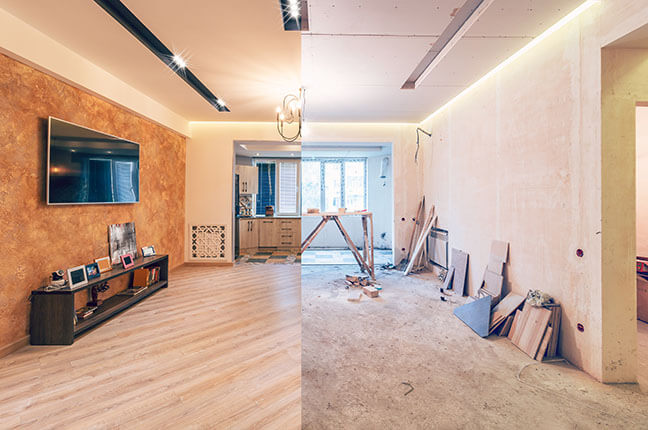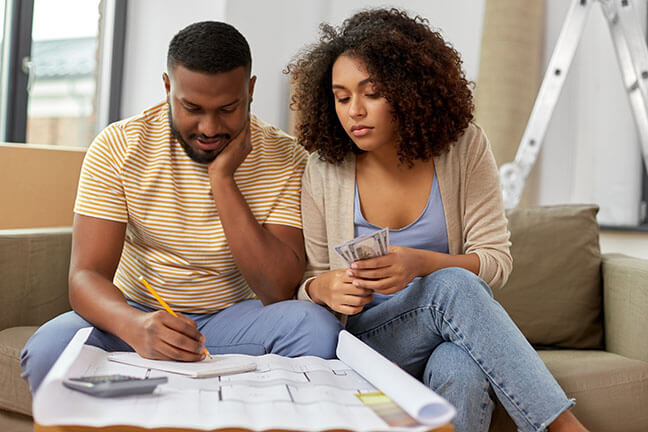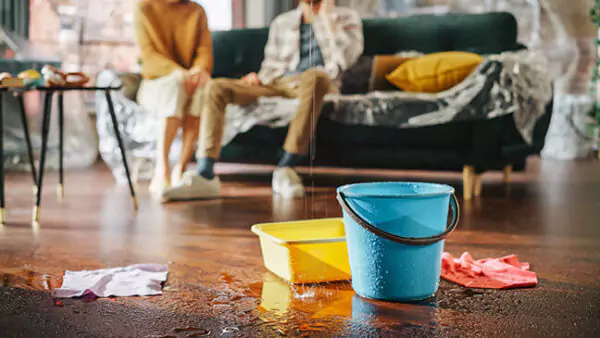Maintaining your home can sometimes feel overwhelming, especially when unexpected repairs arise. The financial burden of these repairs can be significant, but fortunately, there are several avenues for how to get financial help for home repairs and manage these costs.
From government assistance programs, grants, charities, and home equity loans there are various options for you to consider no matter your financial situation.
Government Assistance Programs
Property Improvement Loan Program
The Property Improvement Loan Program, backed by the Department of Housing and Urban Development (HUD), offers an accessible way for homeowners to finance renovations and improvements on their properties by insuring loans from private lenders.
This insurance mitigates the risk for lenders, allowing them to provide loans for both residential and nonresidential property improvements. Eligible participants include property owners, lessees with sufficient lease terms, and buyers under land installment contracts, with the program accommodating loans up to $25,000 for single-family homes and up to $60,000 for projects involving multiple units.
The application process involves reaching out to an FHA-approved lender, and the terms are negotiated between the borrower and the lender, ensuring flexibility and accessibility for a wide range of improvement projects
Section 504 Home Repair program
The Section 504 Home Repair program, offered by the USDA Rural Development, provides vital financial assistance to low-income homeowners in rural areas aiming to repair, improve, or modernize their homes. Specifically a home repair loan designed to ensure homes are safe and sanitary, the program extends loans and grants with a focus on aiding the elderly to eliminate health and safety hazards in their living spaces.
Targeting individuals and families in rural communities, the Section 504 program emphasizes creating better living conditions and enhancing the quality of life for its beneficiaries.
Home Improvement Loans and Grants
Home improvement grants are available from both government entities and private organizations. These grants typically cover repairs and improvements that enhance home safety and accessibility. Eligibility for a housing improvement program often depends on income, location, and the nature of the repairs needed.
Contact the National Residential Improvement Association
For homeowners seeking financial assistance with home improvements, beyond government programs, there are several non-governmental organizations and resources available to help.
The National Residential Improvement Association (NRIA) provides information on various home improvement programs that may offer financial assistance for your home’s needs.
The NRIA can guide you through identifying programs you might qualify for and direct you toward starting the application process. Their services are free to consumers and aim to educate on government-sponsored home improvement loan and grant programs at the city, county, or state level, as well private grants as well as federal assistance.
Local Government and Community Assistance
Local governments and community organizations may also offer programs to assist with home repairs. These can range from grants to volunteer-driven projects, aimed at helping homeowners in need.
Contacting local housing departments or community action agencies can provide leads on available assistance.

Private and Non-Profit Organizations
Organizations like Habitat for Humanity and Rebuilding Together offer both financial assistance and volunteer labor for single-family housing repair. These non-profits focus on making homes safe, accessible, and energy-efficient for those in need.
Catholic Charity - Society of St. Vincent de Paul
The Society of St. Vincent de Paul is a charitable organization that offers housing assistance, including repairs and aid, to those in need. By working closely with local communities, they provide support to individuals and families facing housing challenges, ensuring they have access to safe and secure living conditions.
This help ranges from minor home repairs to more significant housing assistance, depending on the individual or family member’s home situation and the resources available in their area. For more information, visit the Society of St. Vincent de Paul’s official website.
Additional Financing Options
For those who might not qualify for grants, alternative financing options include cash-out refinance, a Home Equity Line of Credit (HELOCs), and personal loans. These can provide the necessary funds for home repairs, albeit at a cost.
Energy Efficiency and Weatherization Programs
The Energy Efficiency and Weatherization Programs, specifically the Weatherization Assistance Program (WAP), are designed to help low-income families reduce their energy bills by making their homes more energy-efficient.
This program, funded by the U.S. Department of Energy (DOE), improves the energy performance of homes using advanced technologies and testing procedures. The DOE allocates funds to states, U.S. territories, and Indian tribal governments, which in turn fund local agencies to provide these services.
How to Qualify for WAP
Eligibility for the Weatherization Assistance Program from the Federal government primarily depends on household income.
Generally, households with income at or below 200% of the poverty guidelines or those receiving Supplemental Security Income (SSI) or Aid to Families with Dependent Children are eligible.
States may also use criteria from the Low-Income Home Energy Assistance Program (LIHEAP), based on family income that is 60% of the area’s median income. Priority is given to households with elderly members, persons with disabilities, families with children, high-energy users, and those with a high energy burden.
To apply, you should first contact your state weatherization agency. The application process involves identifying your local weatherization provider through your state’s website and submitting an application along with proof of income for the previous year. Both homeowners and renters are eligible, but if you’re renting, the program requires permission from the landlord before weatherization work can begin.
Average Benefits Offered
Households participating in WAP can save an average of $372 or more annually on their energy bills following weatherization improvements. Since its inception in 1976, WAP has assisted more than 7 million families, providing a significant impact on energy conservation and reducing energy costs for low-income Americans.

The EASY Wireless Offer - Another Way to Find Money for Home Repairs
While not directly related to home repairs, EASY Wireless’s offers for individuals using SSI, SNAP, and other government programs can qualify for FREE Monthly cell phone and data service.
Sign up for the Lifeline and Affordable Connectivity Program
Unlock the full potential of your communication needs with EASY Wireless, leveraging the Lifeline and Affordable Connectivity Program (ACP). These initiatives are designed to ensure everyone has access to essential telecommunication services.
Lifeline offers a discount on monthly phone services, while ACP provides a substantial discount on internet access.
By signing up with EASY Wireless, you can access these benefits, ensuring you stay connected with FREE monthly talk, text, and data.
Don’t let financial constraints limit your connectivity.
Join EASY Wireless today and embrace the freedom of communication. Explore more and sign up to ensure you’re always connected, without the stress of monthly cell phone bills.
Start Saving Today!
Find the Help You Need
Exploring all available options for financial help with home repairs is crucial. From government programs to non-profit assistance, there are resources available to help maintain your home without breaking the bank.
Be sure to utilize every available resource to keep your homes safe and comfortable.


